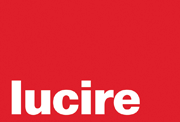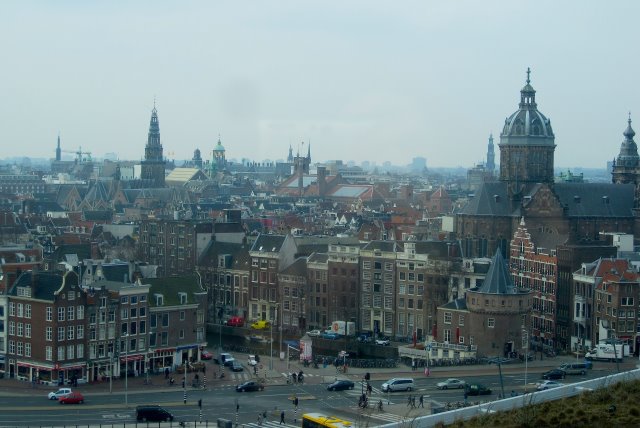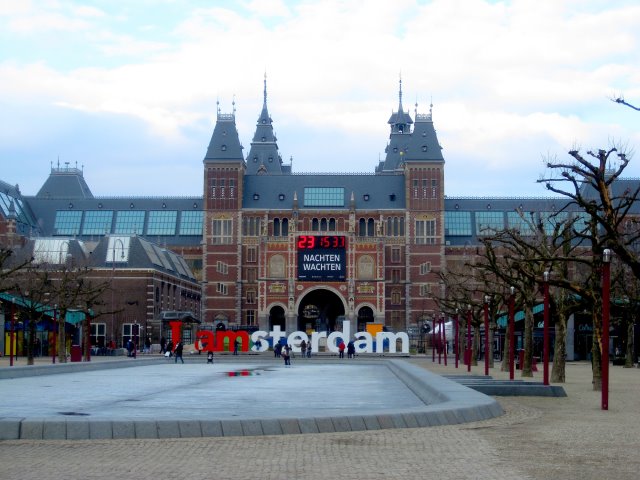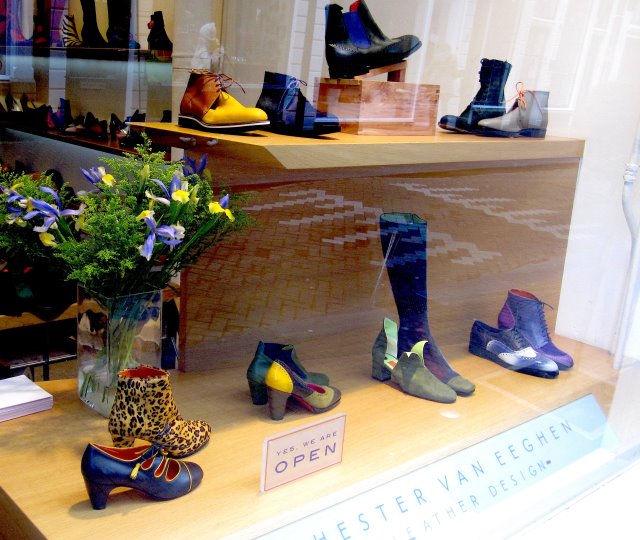
 |
July 27, 2024 Follow us |
|
|
|
The Netherlands
Share this page |
   Top Amsterdam’s skyline. Centre The newly renovated Rijktmuseum. Above Hester van Eeghen shop window, forecasting a more colourful season. What’s new in the old town of AmsterdamAs the van Gogh Museum and Rijksmuseum reopen after years of renovation, Elyse Glickman reports Amsterdam lives up to its reputation as one of Europe’s most artistically exciting cities in other ways
Amsterdam may be a relatively small city far as European capitals go, but there is an endless bounty of culture, fashion and culinary gold waiting to be discovered in its maze of canals, narrow streets and impressive boulevards. Planning a stay, whether it is one day or one week, is essential. While you can drop into some destinations and go where the day takes you, with Amsterdam, you have to start with what your passions are, and plan from there. I learned that lesson the hard way, twice. The first time, I was in my 20s and went with a boyfriend building his DJ business. He ostensibly wanted to do “field research,” and we spent much of our time in the Leidseplein, the quarter with the greatest concentration of bars and college students. We’ll just say the research went awry because of some ill-advised brownie consumption. While I was still in a post brownie-haze the next day, we visited the city’s most essential museum (the Rijksmuseum) and hit an Indonesian rijsttafel restaurant at my Mom’s suggestion. However, he would not hear about my shopping for “little dresses” (never mind we spent a lot of time in record stores) and denied me a chance to visit the Anne Frank House because the line was too long and he had already been there. The second “weekend” was lovely, but ended up being a 24-hour whirlwind because a certain airline was less than willing to allow me to change my flight. The unfortunate turn in travel plans, however, did lead to some good articles about how to take advantage of a 24-hour stopover by winding through the neighbourhoods, outdoor markets and picturesque canals on foot or bike. My romance with Amsterdam remained unrequited, leaving me wondering about what could have been if I had set my priorities straight. However, it was my recent trip to Germany and an invitation by Sofitel to visit their genuinely “Grand” Amsterdam property that enabled me to have another flirt with the magnificent city. Once I set the foundation of my visit into place, I first planned what museums I would visit (the Anne Frank House among them). Next, through networking with fellow travel writers, I was introduced to Lilian Tilmans, a publicist and guide with an encyclopædic knowledge of the city’s hottest hotels, restaurants and shopping. I asked her for some quick suggestions, and instead, got the inside track on the places generating as much of a buzz among locals as well as visitors. She informed me that the timing of my visit was pretty good: 2013 marks the 400th anniversary of Amsterdam’s canal ring, certified as a UNESCO Heritage Site. Even in the last throes of winter, the city was in a party mood. While my visit predated the Rijksmuseum’s opening in April, fresh from a decade-long, $480 million overhaul, and the Van Gogh Museum in May, there were still plenty of fantastic museums open for business, ranging from the Hermitage Amsterdam (the temporary home for many of Van Gogh’s treasures, and a fascinating journey through the life of Peter the Great) and the Rembrandt Museum to the Museum of Bags and Purses (a fashionista essential) to exquisite private canal house residences-turned-museums like the Museum Van Loon which add three dimensions to the still life Dutch Master paintings hanging in the Rijksmuseum. With Amsterdam recognized as a design hub, the Stedelijk is worth a look. The lines at the Anne Frank House still extend around the block. However, the experience is worth the wait, as are the conversations you will have with other people from around the world you will meet in the line. If you visited the Anne Frank House as a child, teen or university student, the museum experience bears repeating, thanks to improvements that make the tour more interactive and Anne’s observations more powerful. The tour concludes with preserved pages from the original diary, driving home the fact that she was a far-above average teenager thrust into an extraordinarily tragic situation, and she had the presence of mind to record history as it impacted a family on a very intimate level. There are also attractions that bridge the worlds of visual art, local history and the art of spirits. The Heineken Experience is a Universal Studios-styled gee whiz maze even non-beer drinkers will find entertaining. Along with a quaint re-creation of a vintage brewery space and archival photos, the tour also features a 3-D ride where visitors “become” a bottle of beer, an arcade where they can create their own digital postcards and videos and samples of the beer at its freshest and best. The House of Bols Cocktail and Genever Experience goes beyond telling its centuries-old story with an aroma testing station and touch screen computers where you enter information about your favourite flavour profile and receive a cocktail and a printed recipe that matches your mood. One thing that makes several leisurely museum visits easy is investment in an IAMsterdam card–bus pass package, which provides discounted and free museum admissions as well as unlimited use of the city’s public transportation.
Edible art, and the art of living well Given the brisk winds and arctic temperatures, Tilmans agrees summer and autumn 2013 will be perfect time to celebrate Amsterdam’s milestones, especially if you stay at one or more of its luxury hotels built into transformed city landmarks. As it turned out, the Grand Amsterdam Sofitel Legend was not the same Sofitel I stayed at during my unfortunately truncated stay. The hotel formerly known as Sofitel located across the street from the popular but commercial Magna Plaza is now the Convent Hotel, which is popular among business travellers for its easy access to Centraal Station and most of the tram lines. The reincarnated and rethought Sofitel, meanwhile, is a consuming and consummate feast for the senses located on Oudezijds Voorburgwal, a quieter residential street. It is also a study in contrasts. The lobby and the restaurant Bridges epitomize rock star glamour, while other sections such as the ballrooms and the wedding chapels retain the historic splendour of its past life as a City Hall. The suites are quintessential Amsterdam, marrying together clean-lined furnishings, happy colour schemes and accents inspired by the city’s days as Europe’s trade capital during the Renaissance. Marrying old and new is a running theme throughout other four- and five-star hotels in town. The Andaz Amsterdam Prinsengracht, built within a former public library, also has one of the city’s best happy hours and best curated bars. The Conservatorium Hotel, home to the renowned Tunes restaurant, was a bank and a music school at different points. The Sir Albert, a former diamond cutting facility, is at once cheeky, refined, and outfitted with conversation-starting amenities. In contrast to the hotels, according to Tilmans, Dutch cuisine is not being reinvented. It is being crafted from scratch, blending local ingredients with modern cooking techniques. The ambitious chefs she introduces me to at these glamorous hotels are causing a stir and teaching some old ingredients many new tricks. Joris Bijdendijk (Bridges, the Sofitel Grand Amsterdam), Schilo Van Coevorden (Tunes, the Conservatorium Hotel), Chef Moshik Samhoud and sous-chef Dennis Huwae (&Samhoud) are not just bringing refinement to local cauliflower, root vegetables, seafood and cocoa. Their approach starts with making dishes either too pretty to eat or look like something other than what was ordered (a plate of forest mushrooms made of chocolate; savory terrines that look like molded chocolates). Dig right in and explore, as their artwork is intended to shock, surprise and be enjoyed with all five senses. continued below
Ports of call along and away from the Canals One Amsterdam street delicacy that needs no improvement is the pickled herring sandwich with onions and pickle slices. Speaking of fish, several sushi–pan-Asian–cocktail spots, such as Izakaya at the new and buzz-worthy Sir Albert Hotel and Momo, sneak in a touch of Amsterdam’s creative irreverence into the presentation. While my boyfriend and I hit Waterlooplein and the Jordaan’s flea markets in 2000, Tilmans explains those haunts are now more tourist magnets than treasure troves. Tilmans prefers the Albert Cuypmarkt, Noordermarkt, and their surrounding streets. One will not only find a dozen expressions of gouda and aromatic pannenkoeken stalls, but an international array of foods reflecting Holland’s long global trading history. While rijsttafel restaurants are as much an Amsterdam institution as they are Indonesian, Tilmans points out Surinamese restaurants are, literally and figuratively, the hot thing right now. Another big food trend is Dutch artisanal bakeries, which provide a welcome alternative to the “coffee shops” favoured by college kids. These arty spots transcend the traditional boundary of what is “good enough to eat”. Lilian’s favourite is De Taart van m’n Tante (‘My Auntie’s Cakes’, at Ferdinand Bolstraat 10), which not only proffer designer cupcakes but make multi-tiered epic works of art. While the aforementioned street markets include stalls vending cute housewares and ceramics, if you want to outfit your kitchen with European chic without paying European prices, start at Hema. The Dutch answer to Target and has pop-art-coloured goodies and gadgets for the countertop as well as a food market. Another good bet is Marqt, a stylish and spotless organic supermarket chain with reasonably priced local foods. On the high end of the spectrum, Tilmans recommends Duikelman, for its sculptural, cutting-edge professional and home kitchen utensils and gadgets, and Bilder & DeClercq, where you can buy a recipe and all its components in a culinary school setting. Dressed to the “Nines”, and beyond Although the city was awash in brown, black and grey at the time of my visit, store windows all over town foretold of a brighter, happier and more colourful season ahead. While Claudia Strater remains one of my favourite Dutch designers (especially as a coat from her Maura line kept me warm in bone chilling winds coming off the water), I opt to spend my limited shopping hours beyond the main drags. Tilmans and others I spoke with before my European trip recommended that if time allowed for only one shopping area, the Nine Streets was the definitive spot for Dutch retail therapy. Some of the city’s best-curated second-hand stores are within this hashtag-shaped retail grid, with pieces better suited for the office and cocktail hour than for the underground music clubs of the Leidseplein (which is what you would find in Waterloopein). The Nine Streets is also a far better place to find local labels and investment pieces. If you are looking for an eye-catching bag or wallet, Fab, whose goods may one day end up in the Purse & Handbag Museum) is a must. While Fabienne Chapot’s handcrafted items are not inexpensive, the colour palate is stunning, her tailoring and leathers are impeccable and the designs (oh, that butterfly appliquéd wallet!) covetable yet ideal for everyday use. At first glance, Exota (Hartenstraat 10, 1016 CB Amsterdam (31 20 62-09-102) and its “King Louie” line may bear a passing resemblance to Oilily, which was big in the ’80s and ’90s in the States. However, at closer inspection and a few trips to the fitting room, the prints are sophisticated, the fitted dress and blouse cuts curve-flattering and the prices very reasonable. Other Nines Streets stores worth a peek include Spoiled (noted for its library-like denim bar), Ready to Fish, Sky and Lock, Stock & Barrel—all of them brimming with atmosphere as well as labels that are hard to come by outside of western Europe. Another street worth checking out if your visit to the Stedelijk Museum before stores close is Van Baerlestraat, which also brims with a mix of higher-end chain stores as well as lovely boutiques such as Linhard, stocked with local and northern European labels that mix wearability with contemporary lines and happy colours. Noosa is one local line that caught my attention—leather belts, sandals and bracelets that one can customize with interchangeable buttons. My 72 hours in Amsterdam was an affair to remember. Even though I left it wanting more, I also felt very fulfilled having had the chance to explore it in a more thoughtful way. Heck! Even Rembrandt, Vermeer and van Gogh would fall in love all over again with the many ways the city comes to life in the 21st century. •
For more information, visit www.iamsterdam.com.

The global fashion magazine
|
|
|||||||
|
Elyse Glickman is US west coast editor of Lucire. |
|||||||||
Copyright ©1997–2022 by JY&A Media, part of Jack Yan & Associates. All rights reserved. JY&A terms and conditions and privacy policy apply to viewing this site. All prices in US dollars except where indicated. Contact us here.